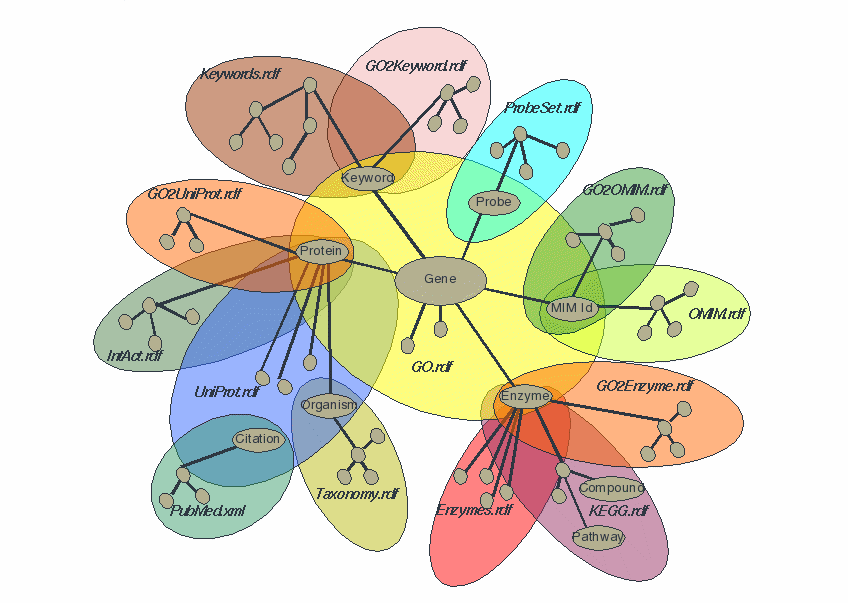Web Science
The process of designing things in a very large space
http://www.w3.org/2007/Talks/0509-www-keynote-tbl/
Tim Berners-Lee
MIT Computer Science & Artificial Intelligence Laboratory (CSAIL)
University of Southampton School of Electronics and Computer Science
This talk
- What it is that we do
- Some challenges
Philosophical Engineering
- cf. Experimental Philosophy
- Microscopic rules
- Macroscopic behavior
- Connection between them
- Synthesis vs Analysis
- Rules are social as well as technical
Designing a system...
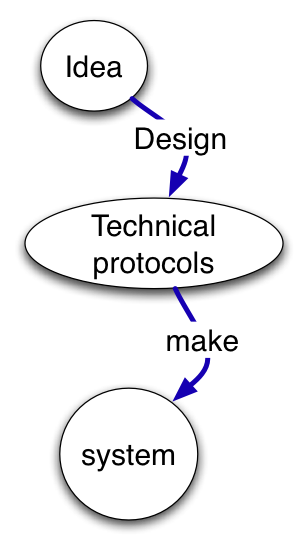
involves social conventions too.
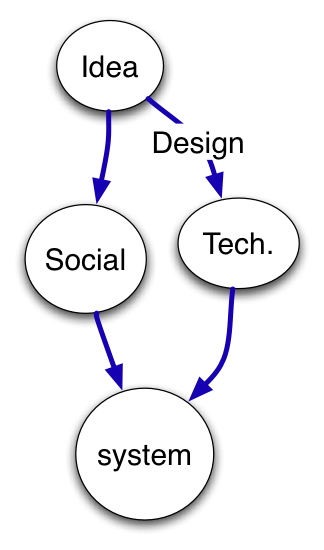
Microscopic system
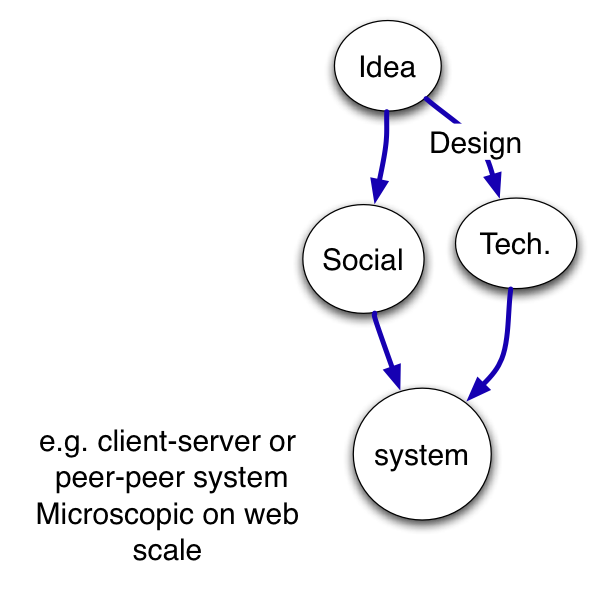
Macroscopic effect
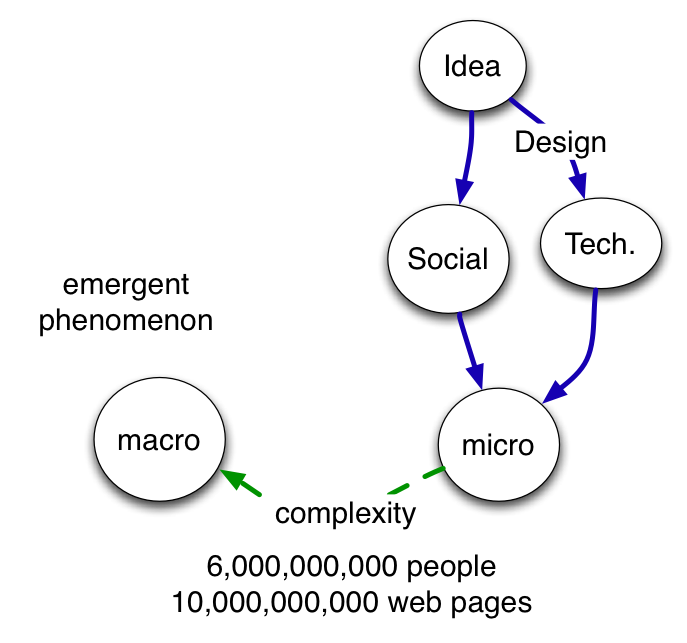
Analyze the result
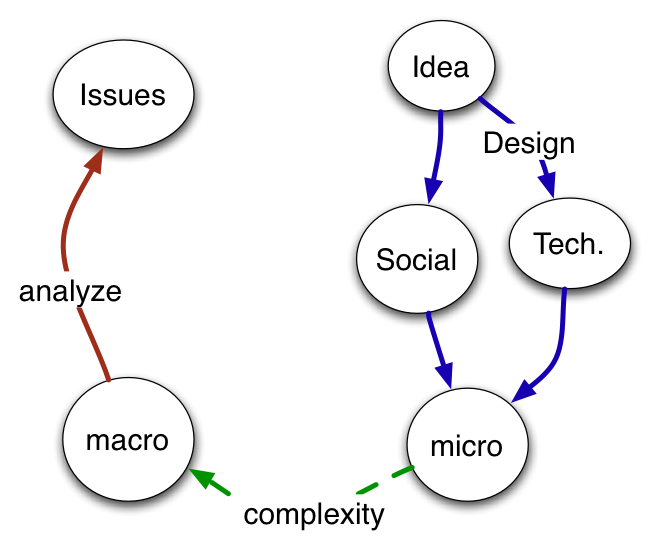
Is this what we want?
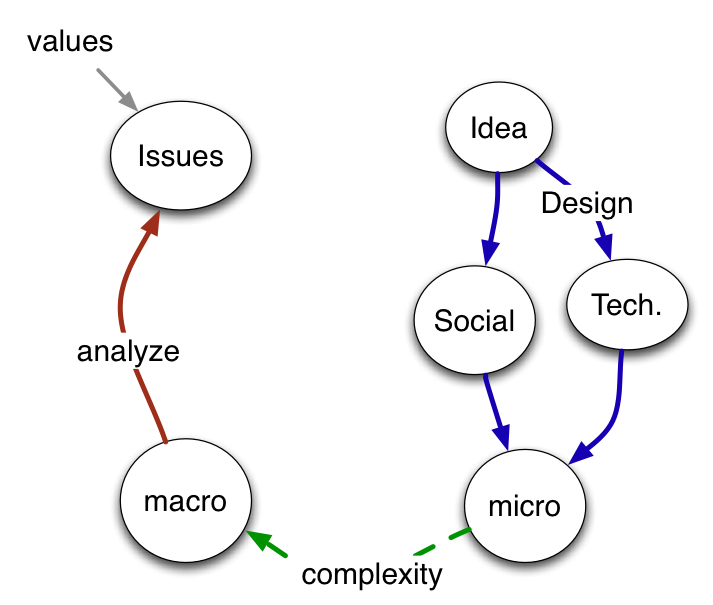
The process of web science
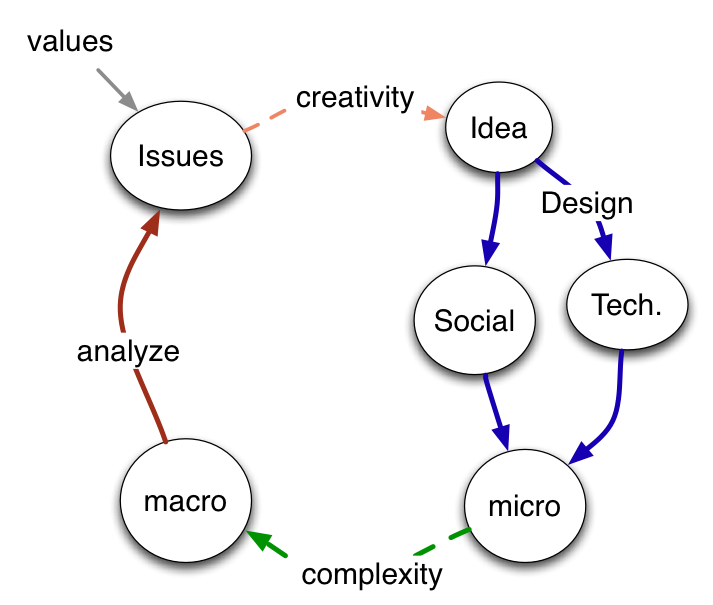
Science and engineering
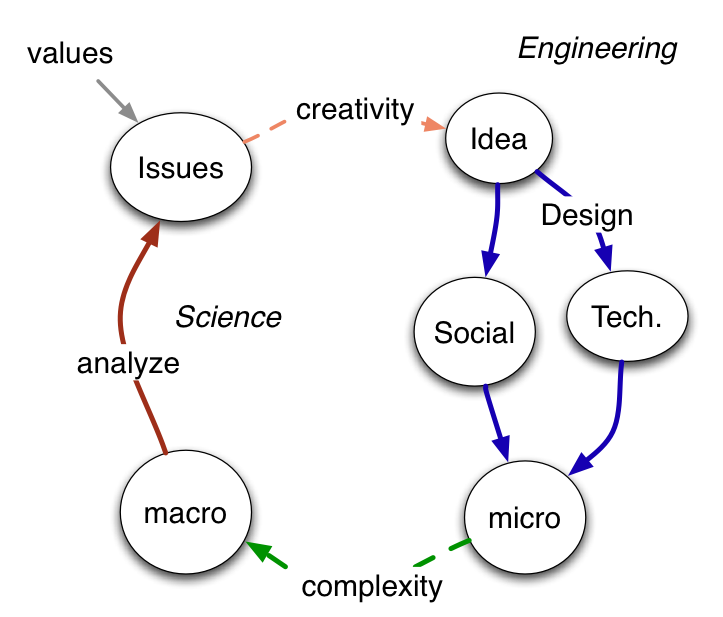
Magic
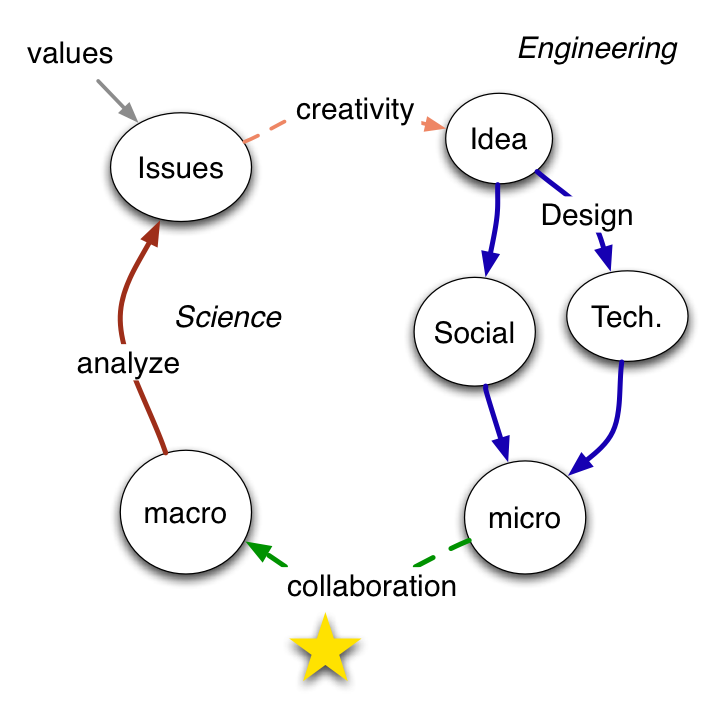
magic = stuff you don't understand
More magic
magic = stuff you don't understand yet
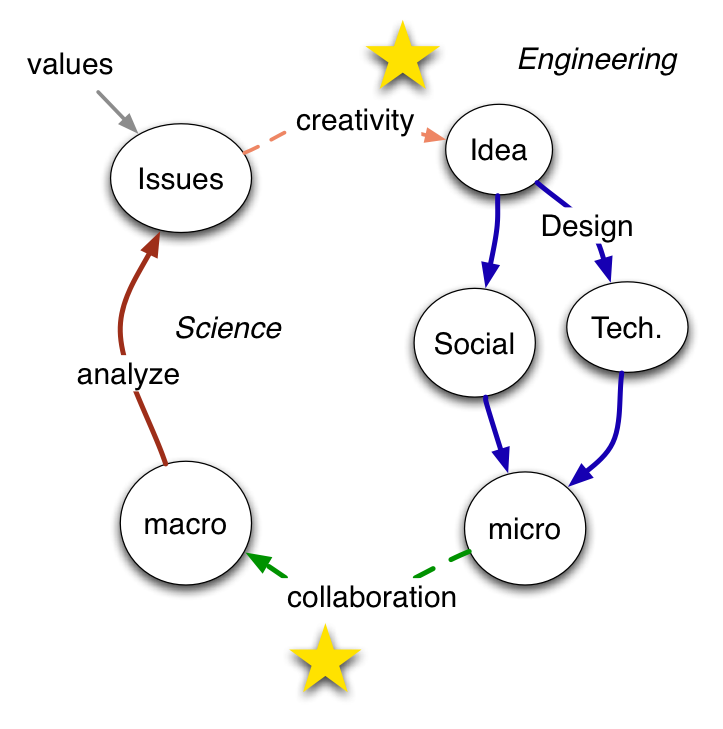
Second guessing
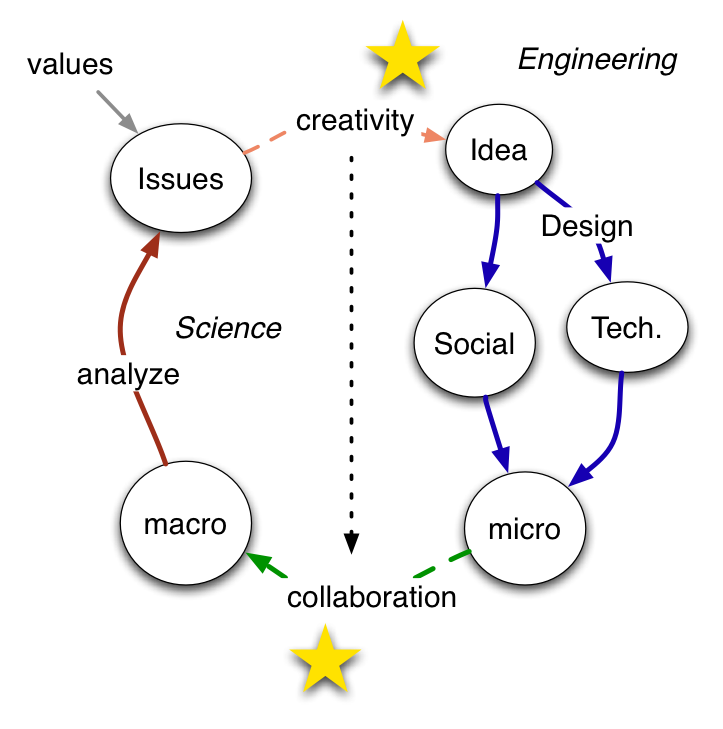
For example...
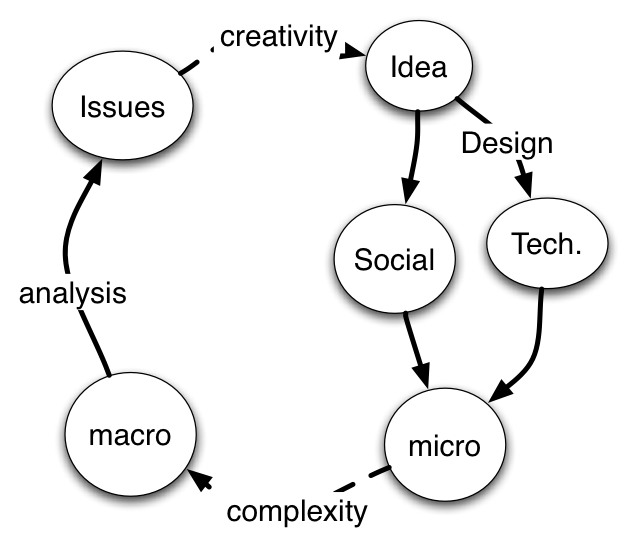
Email

WWW - as envisaged
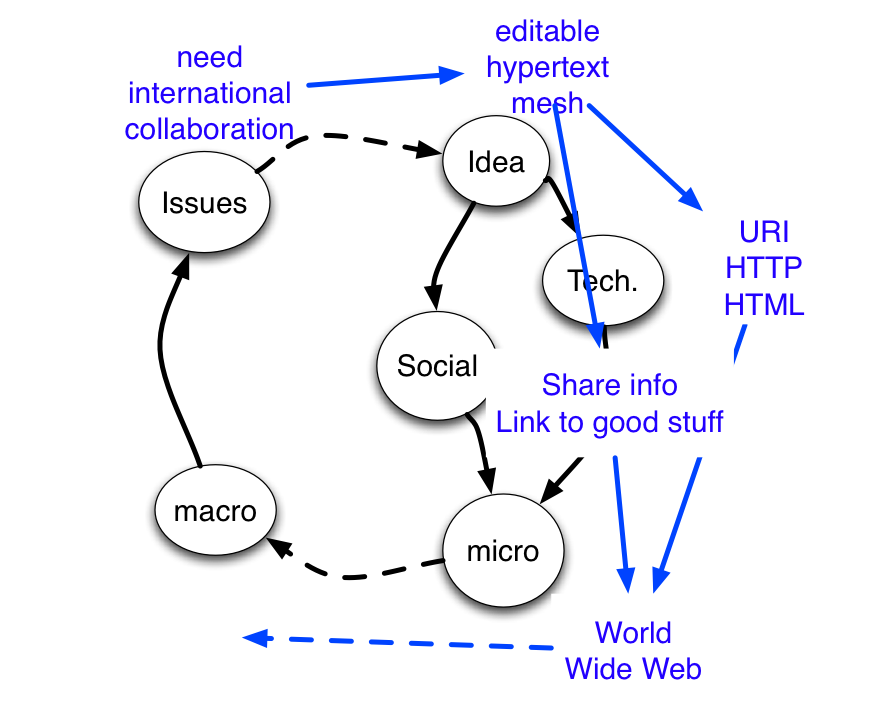
WWW
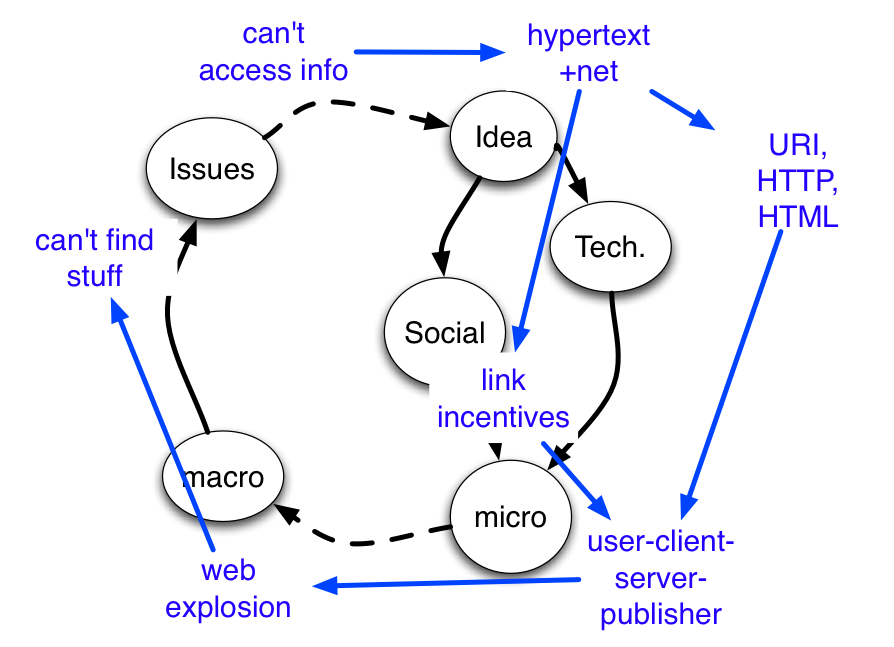
Building on WWW: Google
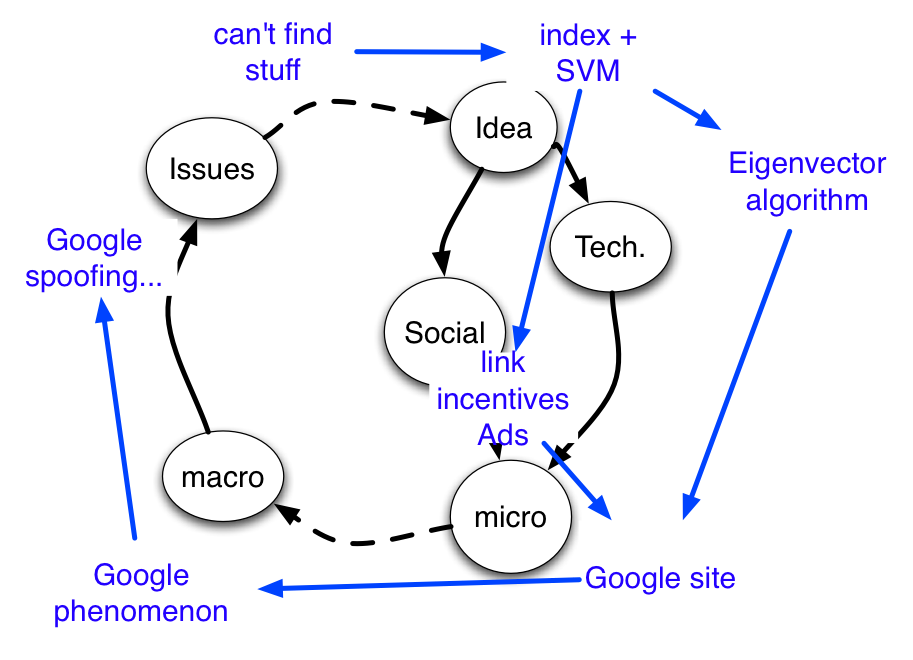
Wiki
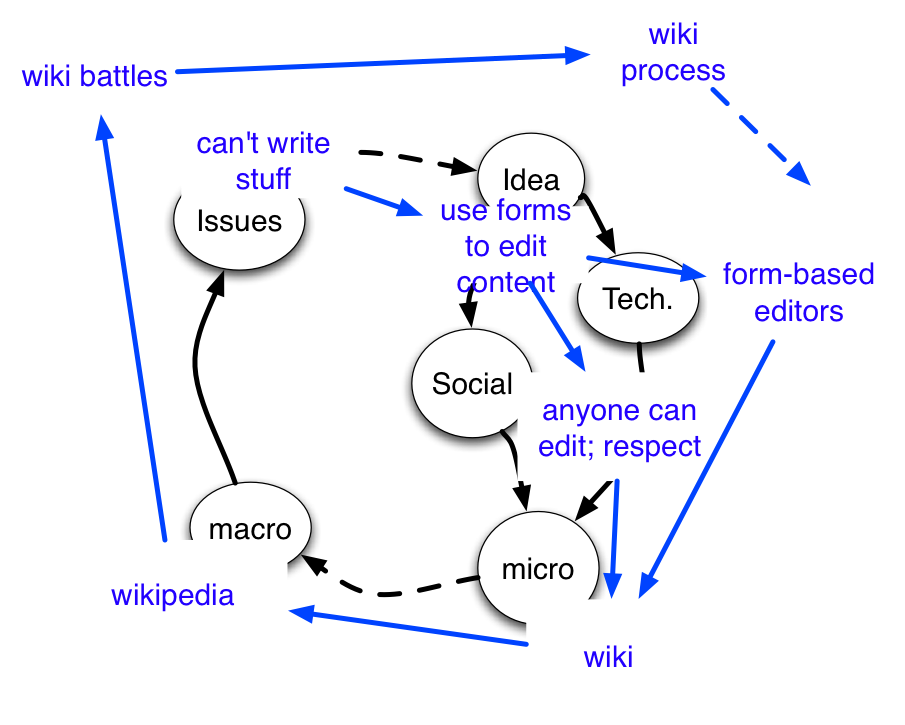
Blog
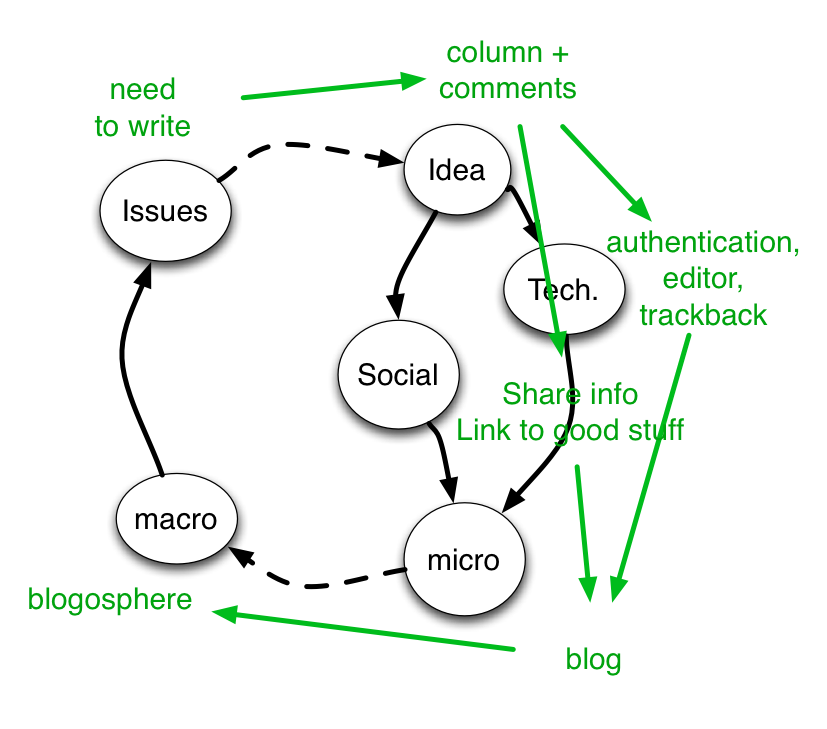
Semantic Web
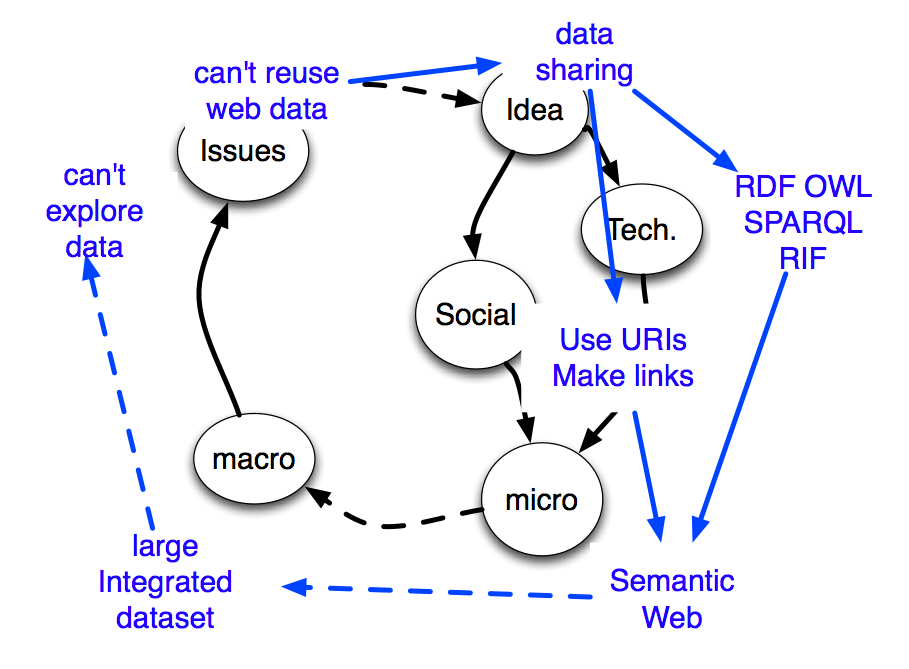
Linked Data
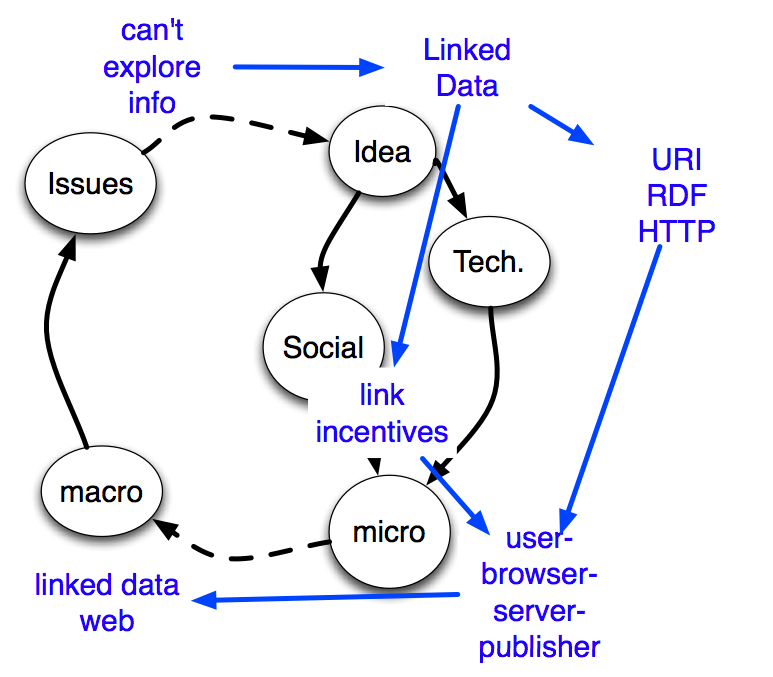
Shapes of data
- lines: tape, cards
- matrix: databases
- Trees: SGML, XML, Top-down structured design, OO
- Net: Internet (?), WWW (?)
What shape is the WWW?
The shape of the web
Society includes communities on many scales
Universal WWW must include communities on many scales
Applications connected by concepts

- Communities will be of many sizes.
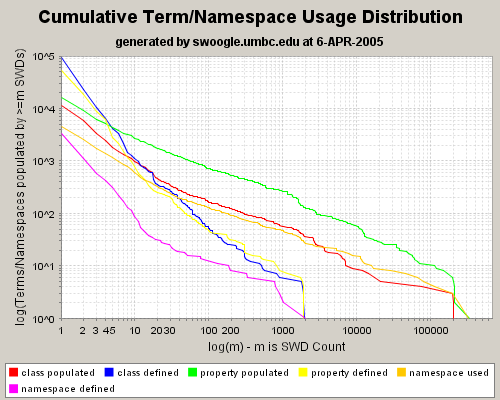
- There will be very many small ones (6.10^9 of size 10^0)
and a few global ones (e.g. W3C Recommendations)
- Kleinberg shows
that fractal (1/f) distribution is optimal under some
assumptions
- Swoogle
results for example (right)
- We have less experience when fractal is not constrained
to a 2D surface.
Total Cost of Ontologies (TCO)
Assume :-) ontologies
evenly spread across orders of magnitude; committee size
as log(community), time as committee^2, cost shared across
community.
| Scale |
Eg |
Committee size |
Cost per ontology (weeks) |
My share of cost |
| 0 |
Me |
1 |
1 |
1 |
| 10 |
My team |
4 |
16 |
1.6 |
| 100 |
Group |
7 |
49 |
0.49 |
| 1000 |
|
10 |
100 |
0.10 |
| 10k |
Enterprise |
13 |
169 |
0.017 |
| 100k |
Business area |
16 |
256 |
0.0026 |
| 1M |
|
19 |
361 |
0.00036 |
| 10M |
|
22 |
484 |
0.000048 |
| 100M |
National, State |
25 |
625 |
0.000006 |
| 1G |
EU, US |
28 |
784 |
0.000001 |
| 10G |
Planet |
31 |
961 |
0.000000 |
Total cost of 10 ontologies: 3.2 weeks. Serious project: 30
ontologies, TCO = 10 weeks.
Lesson:
Do your bit. Others
will do theirs.
Thank those who do working groups!
Shape conclusion
- The shape of the web is a fractal tangle
- The shape of the web should be a fractal tangle
- We should engineer for that
Web science - challenges
Random selection
Challenge: User Interface
Domain-specific user interfaces are
blossoming... but what about generic ones?
- Generality: can browse any data anywhere
- Dynamically pick up from ontology: Lenses, style,
forms
- Independent control of: style, provenance, domains
(vocabulary groups)
- Explore new data dimensions
- Analyze
- Visualize
- Blow spreadsheet tools away
Challenge: Information Policy
- Identity
- Privacy
- Appropriate use
- Transparency
- Trust models
Challenge: Resilience
- Internet breakage: Slash-dotting
- Web breakage: Error 404
- Phishing etc.
- Spam
- Wiki Spam
- Awareness of possible future failure modes
Web Science attitude is necessary:
- Problems combines technical and Social aspects
- Problems are a function of the very large scale
Challenge: Collective quality assessment
- New web-enable processes
- Needed by W3C, wiki,
Challenge: Collective Creativity
- Creativity together
- Fractal groups
- New geography-free connectivity
- More intuitive interfaces
- New forms of democracy for difference cases
- Connection of half-formed ideas
Web Science: multidisciplinary
- Computer science
- Policy and Law
- Network engineering
- Economics
- Social Science
- Psychology
- Mathematics
- Media studies
- etc....
Web Science Research Initiative
- Getting people together
- Defining research areas
- Moving & funding students
- Southampton ECS and MIT CSAIL
- webscience.org
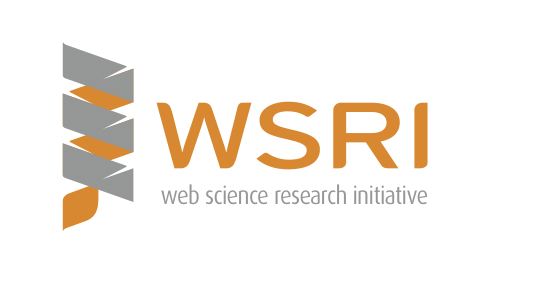
Thank You
More:
WSRI: webscience.org
Thank you for your attention
http://www.w3.org/2007/Talks/0509-www-keynote-tbl


 Berners-Lee
Berners-Lee

 Berners-Lee
Berners-Lee







 magic = stuff you don't understand
magic = stuff you don't understand












